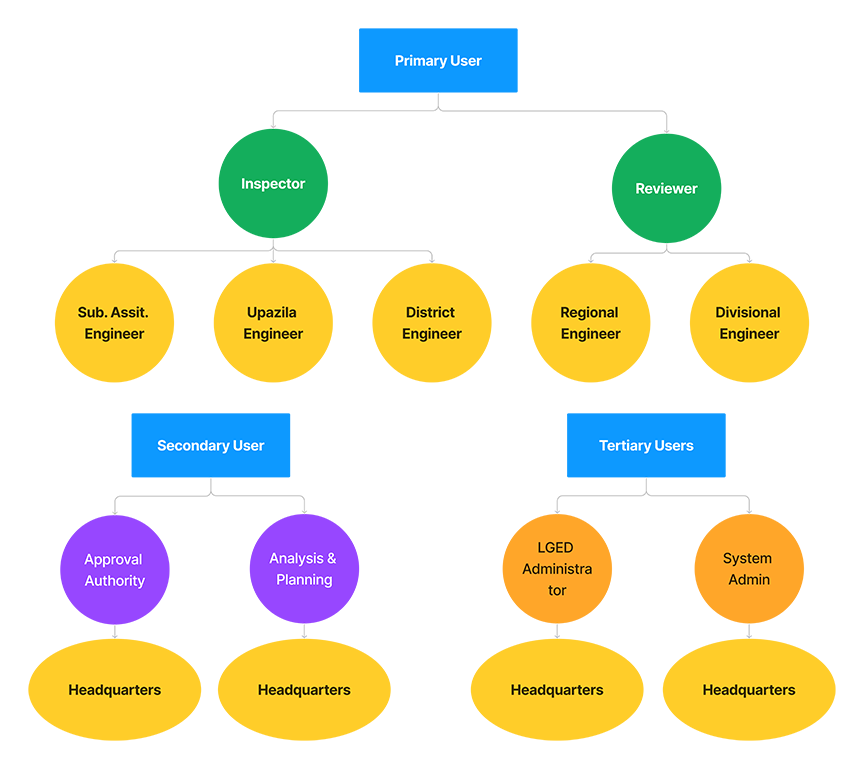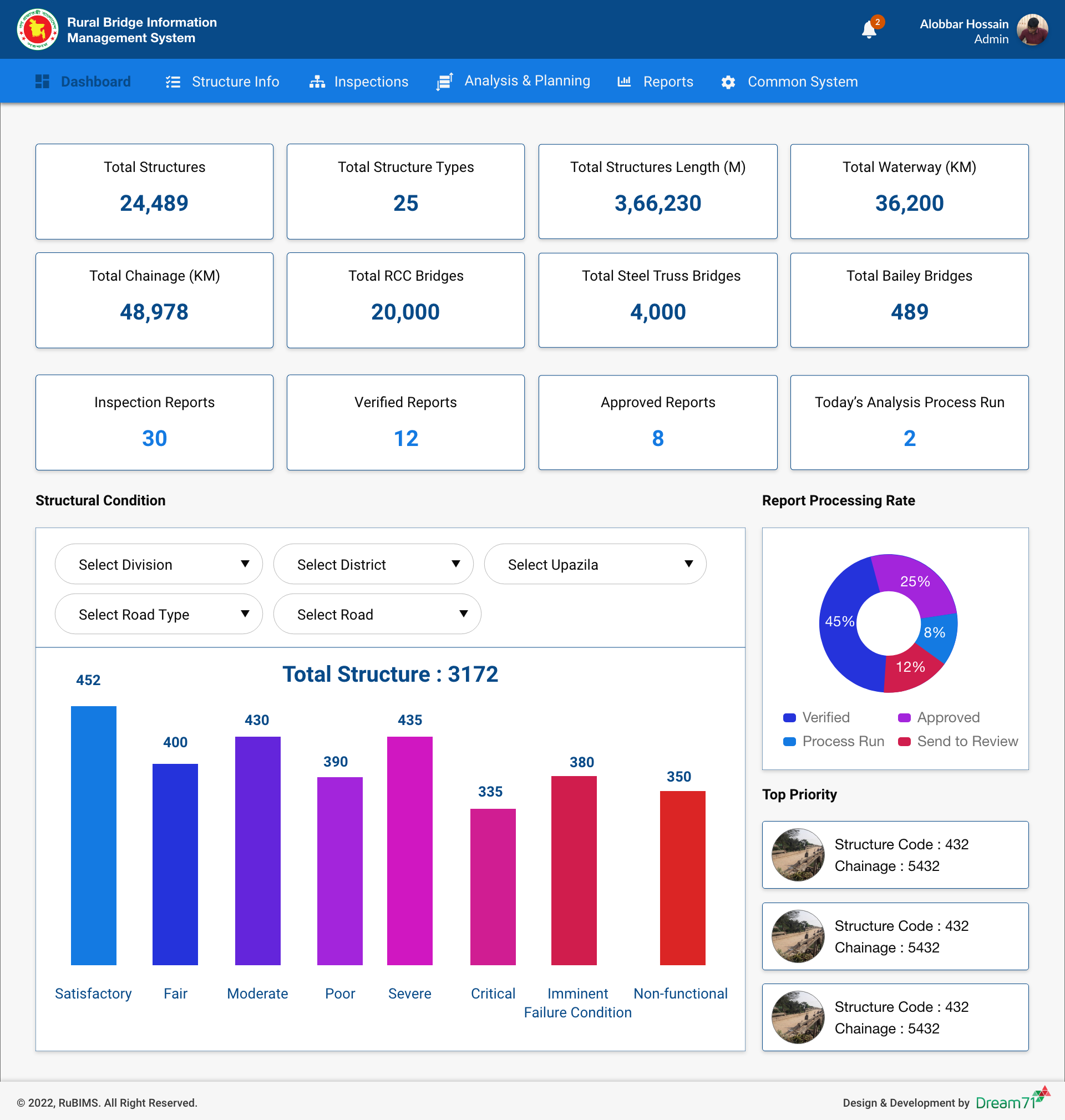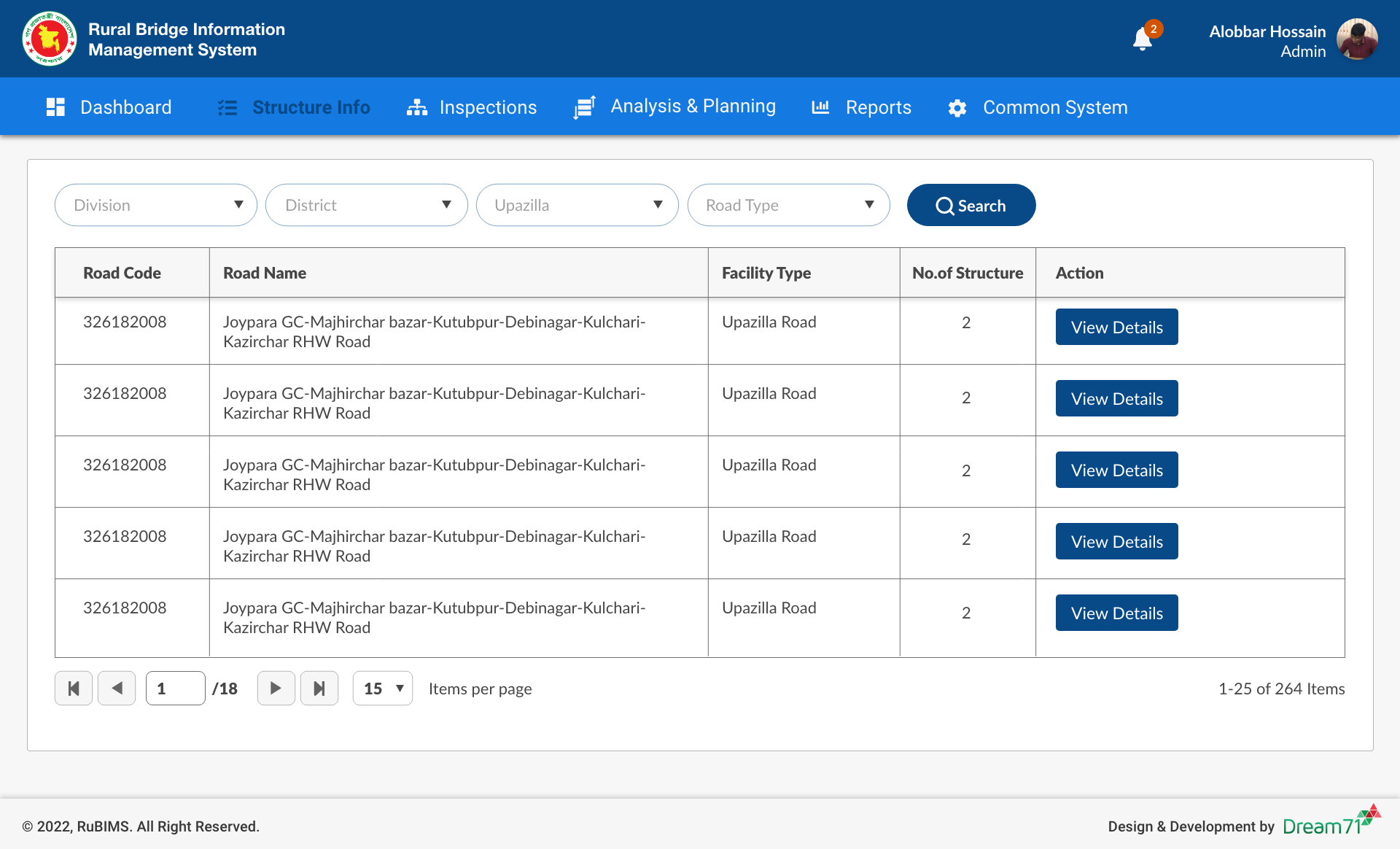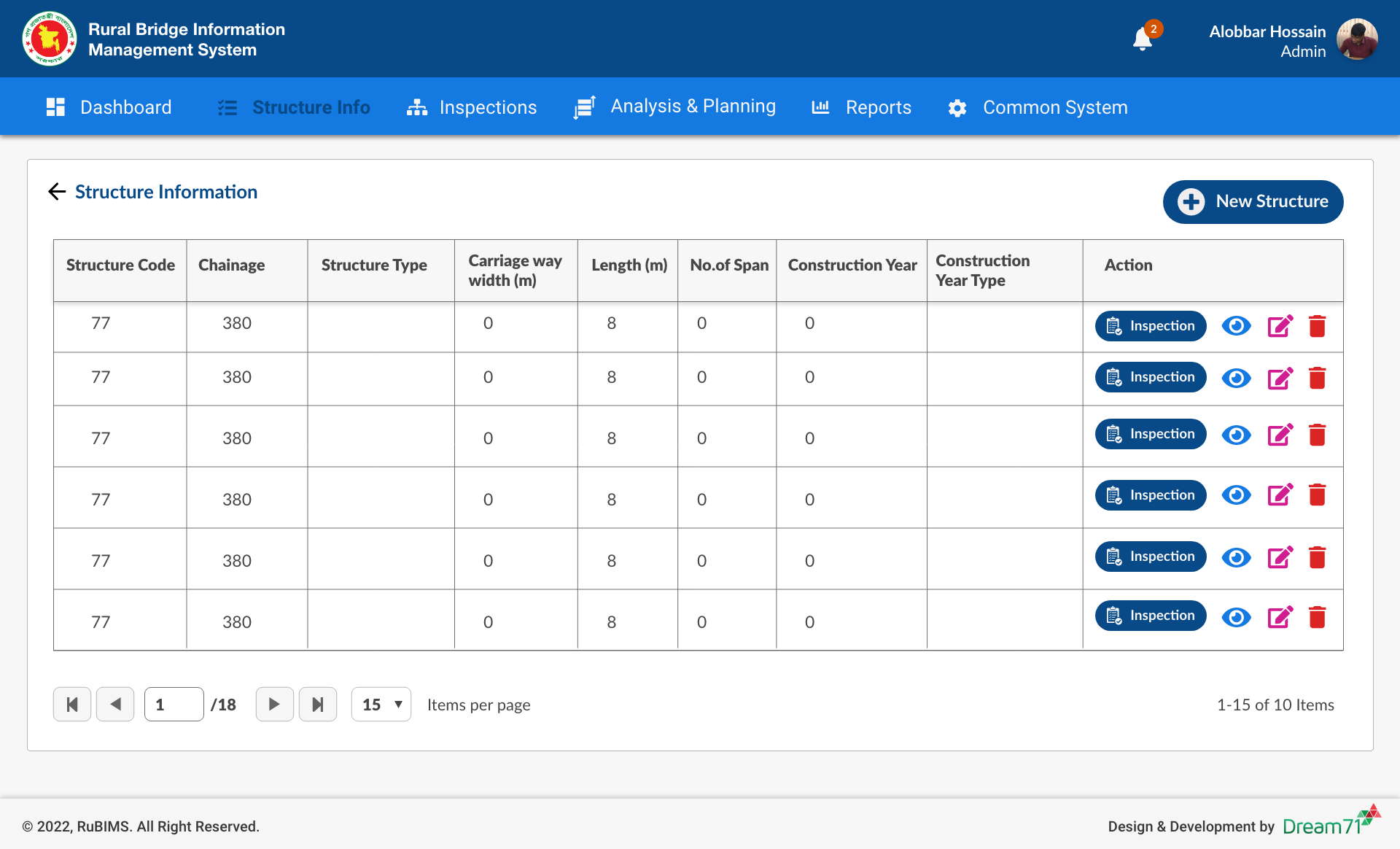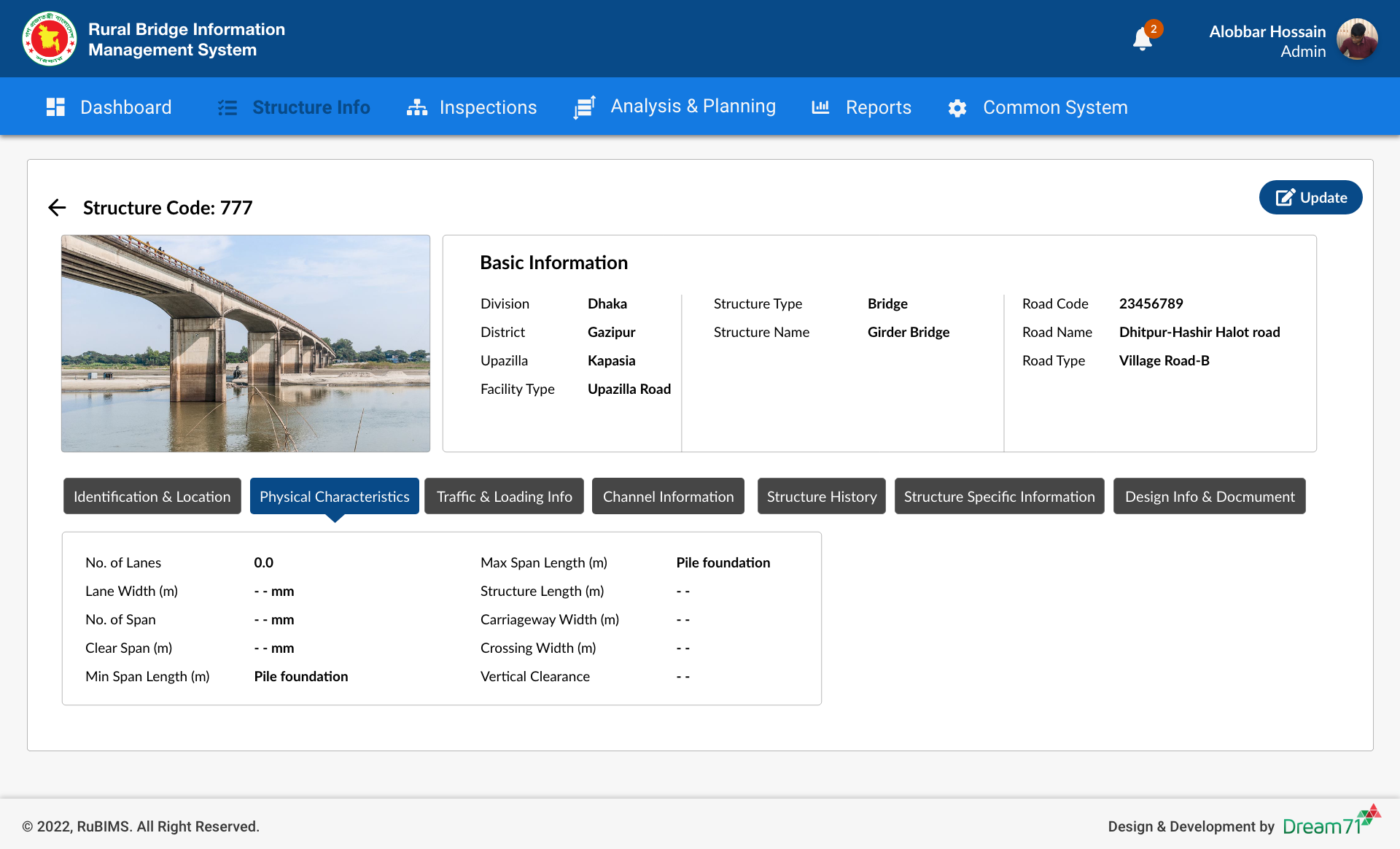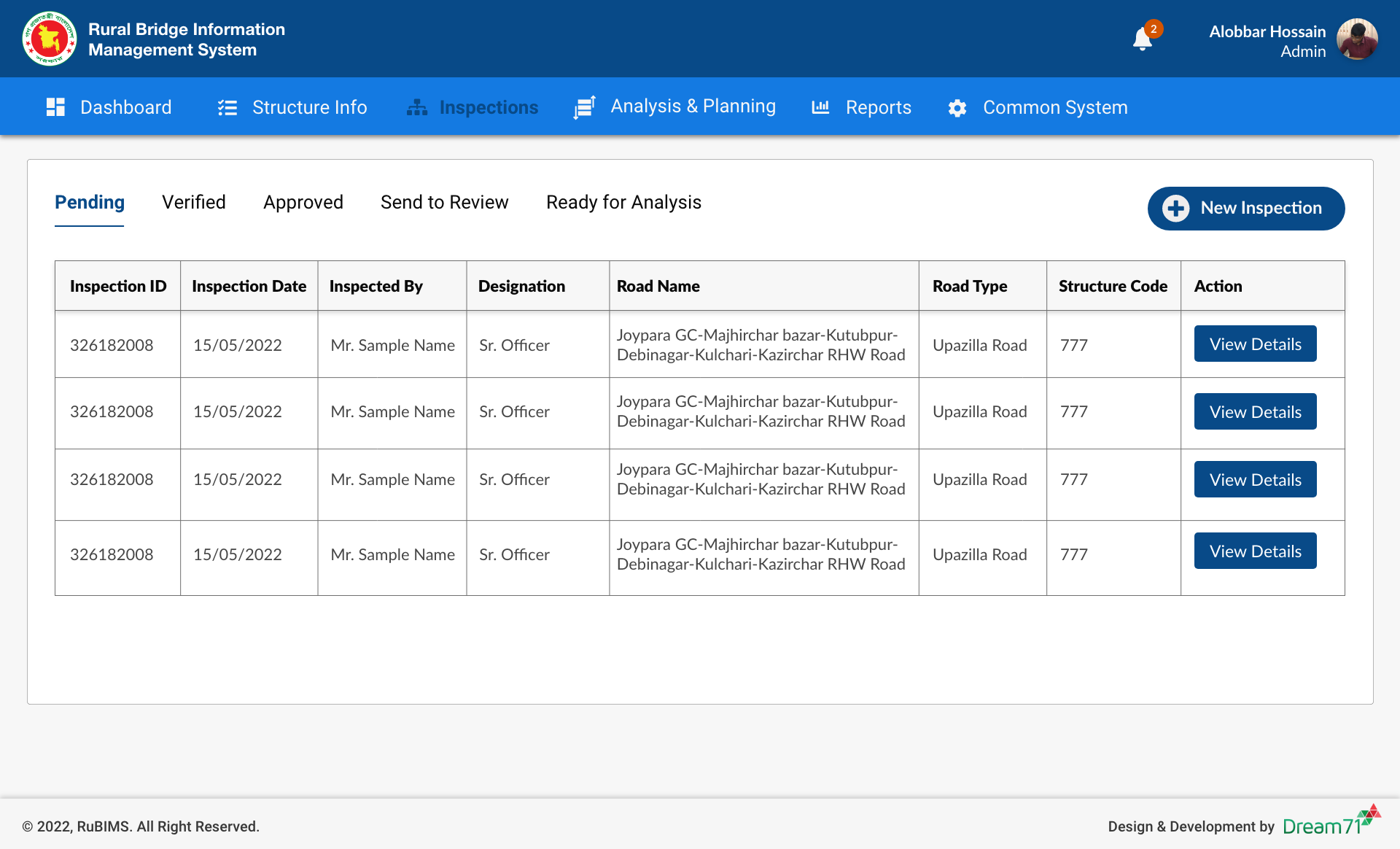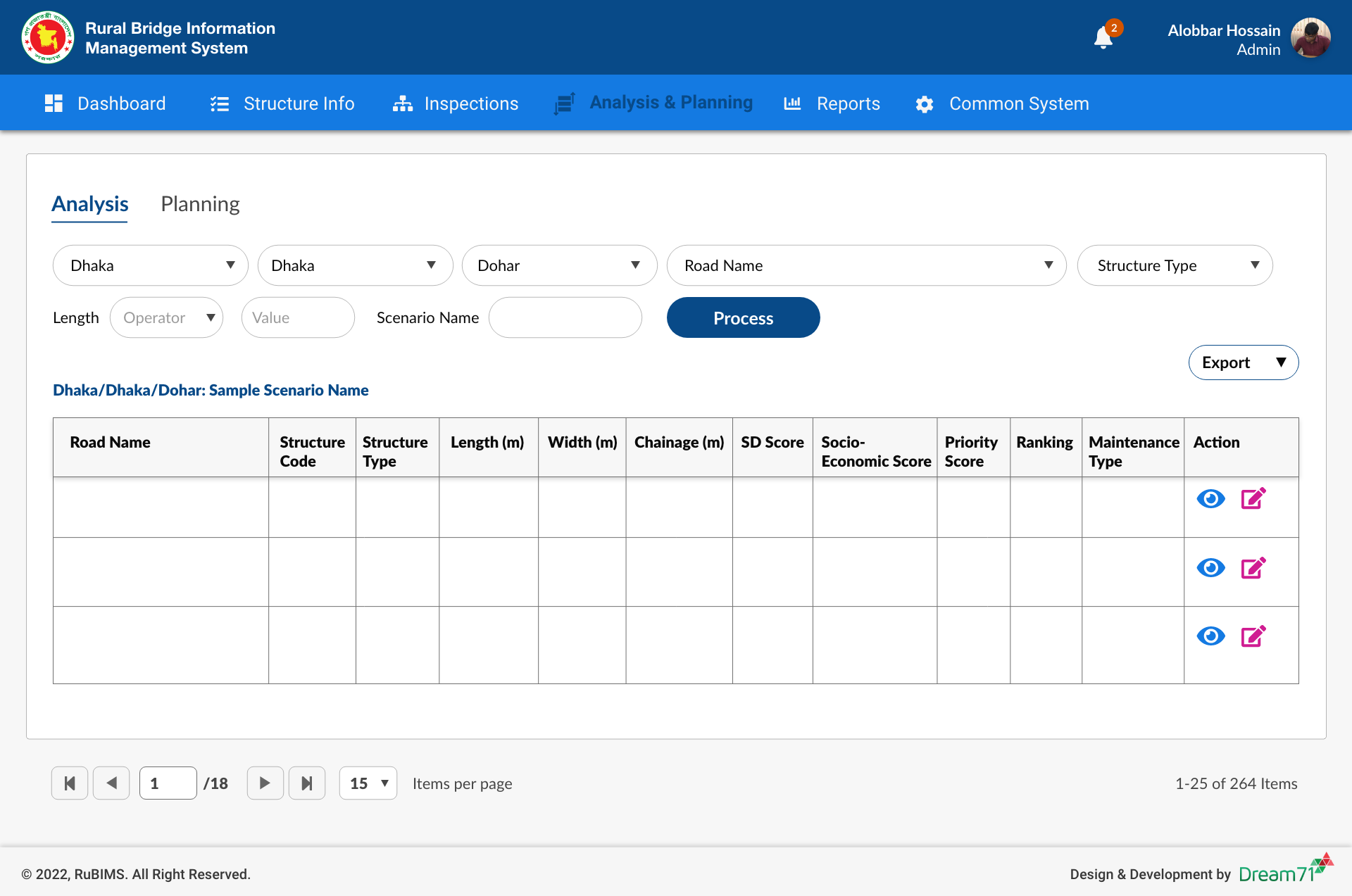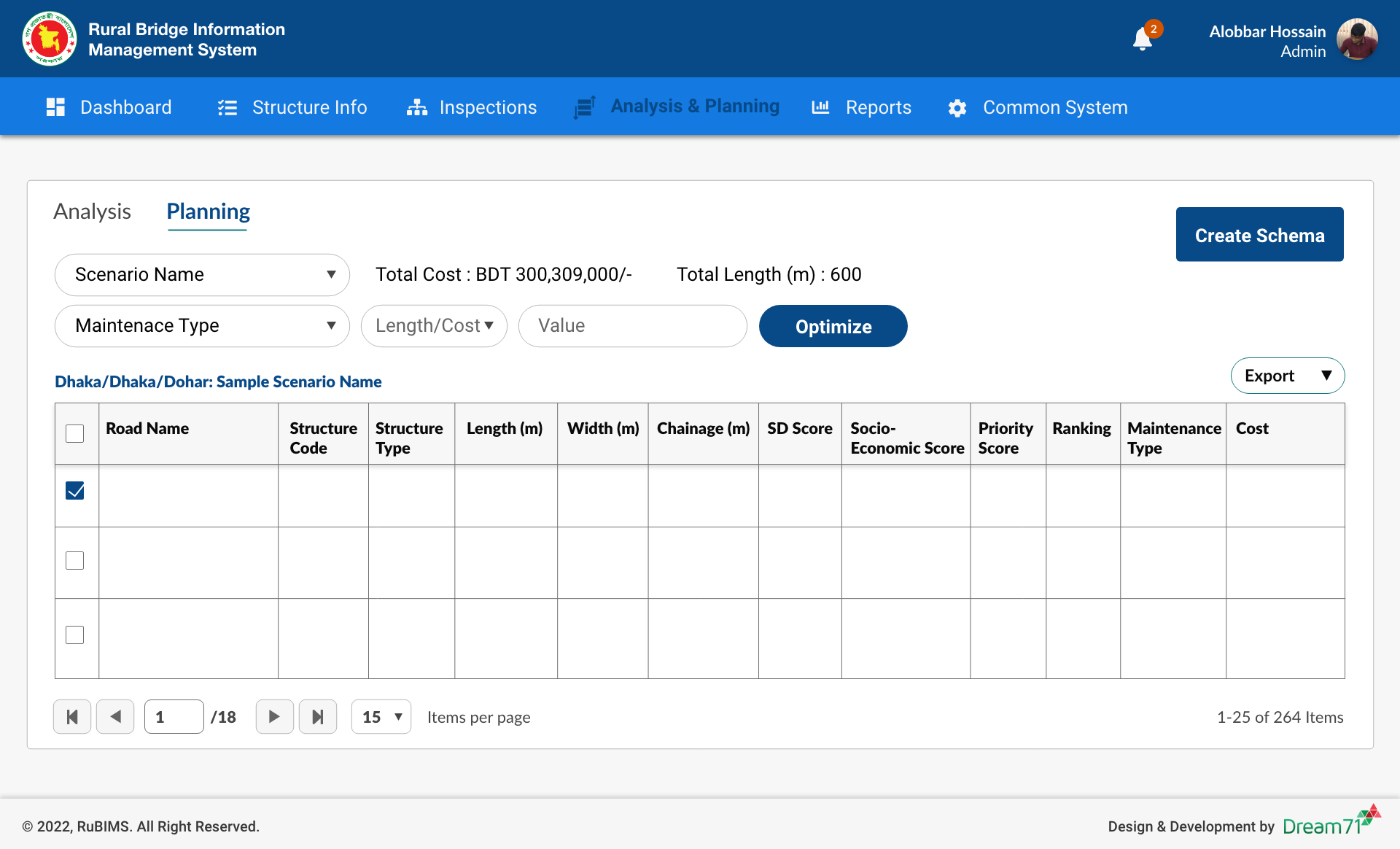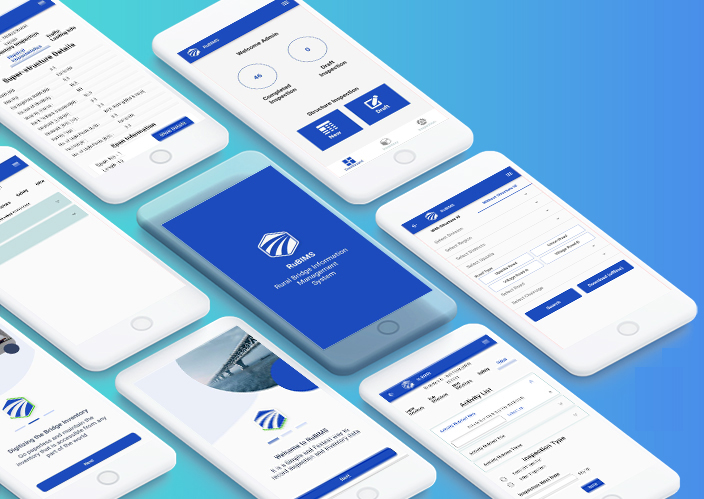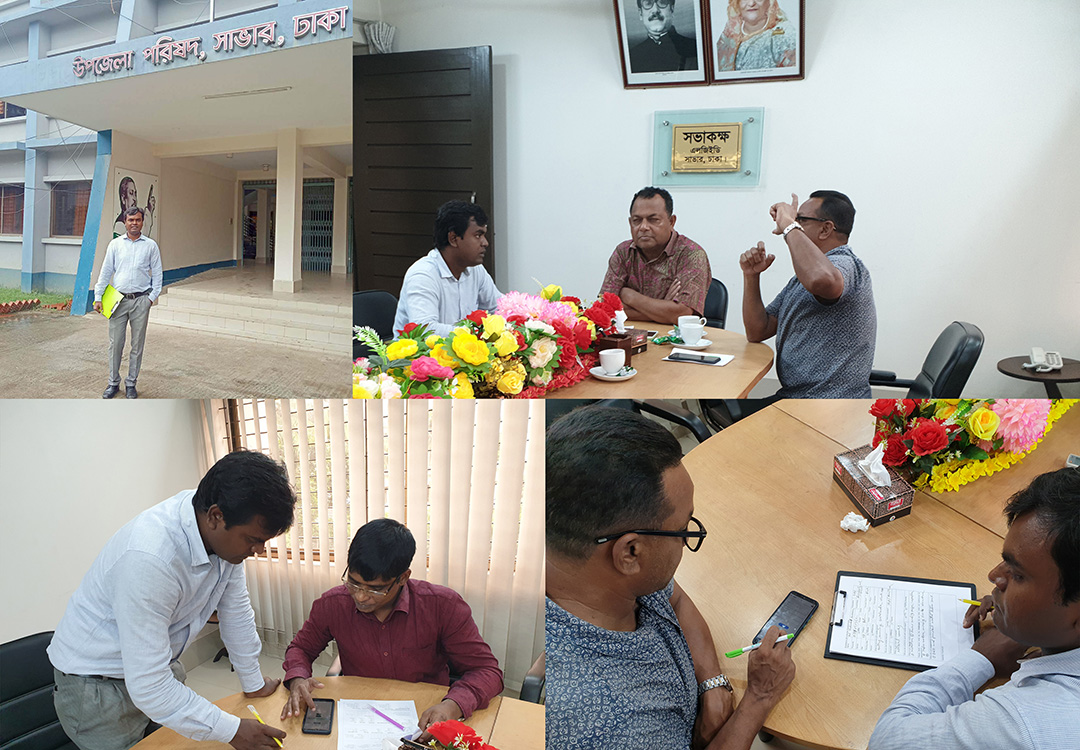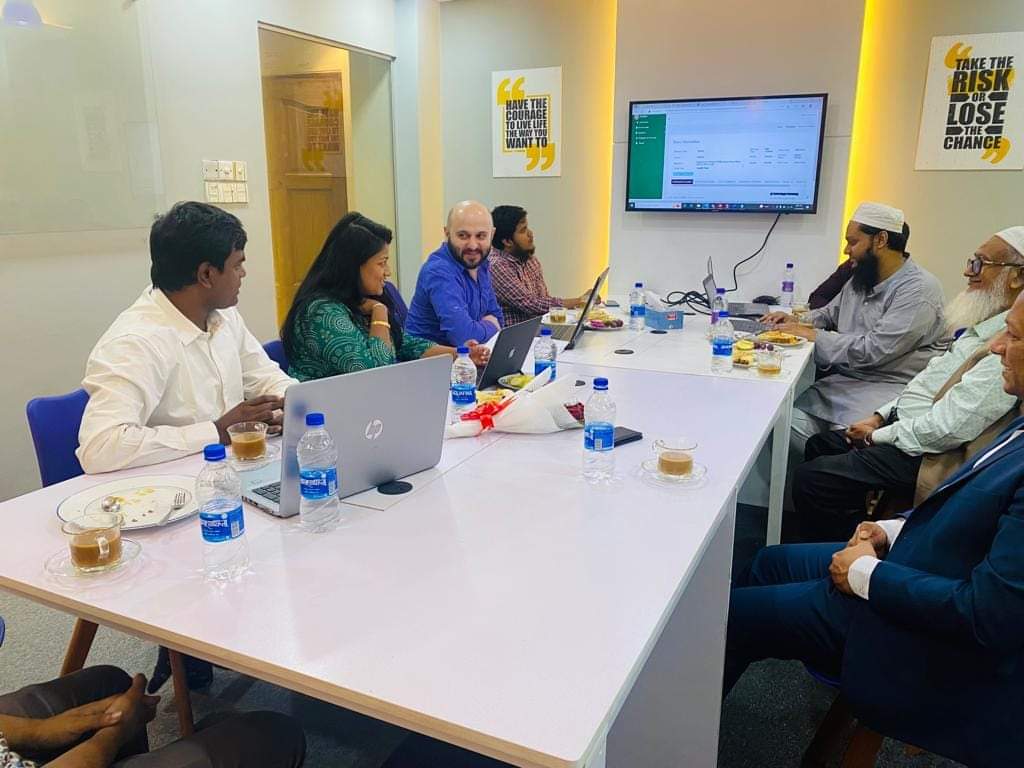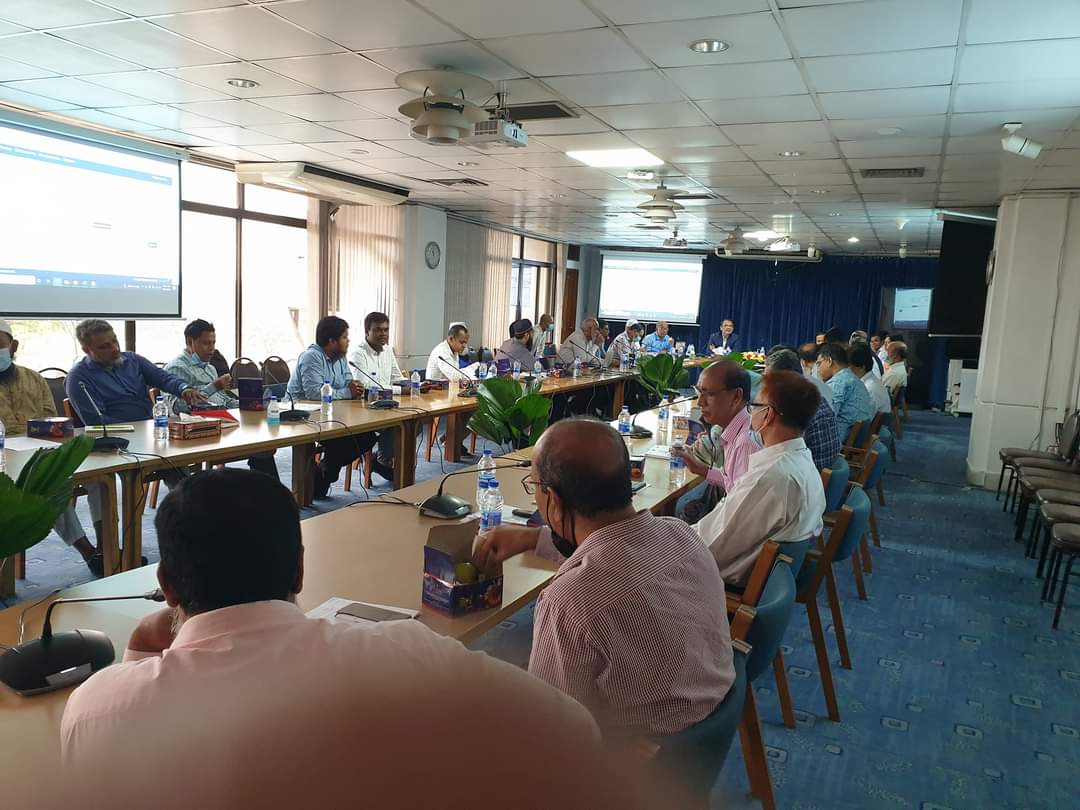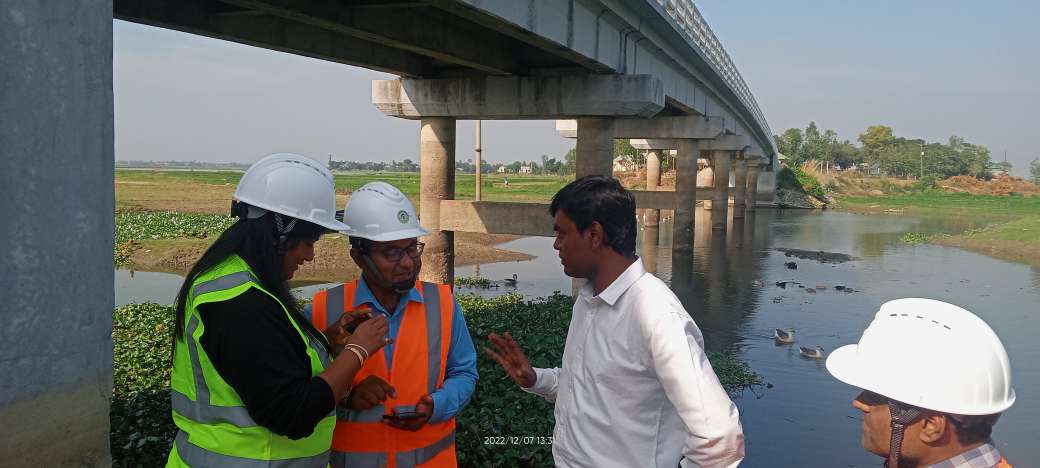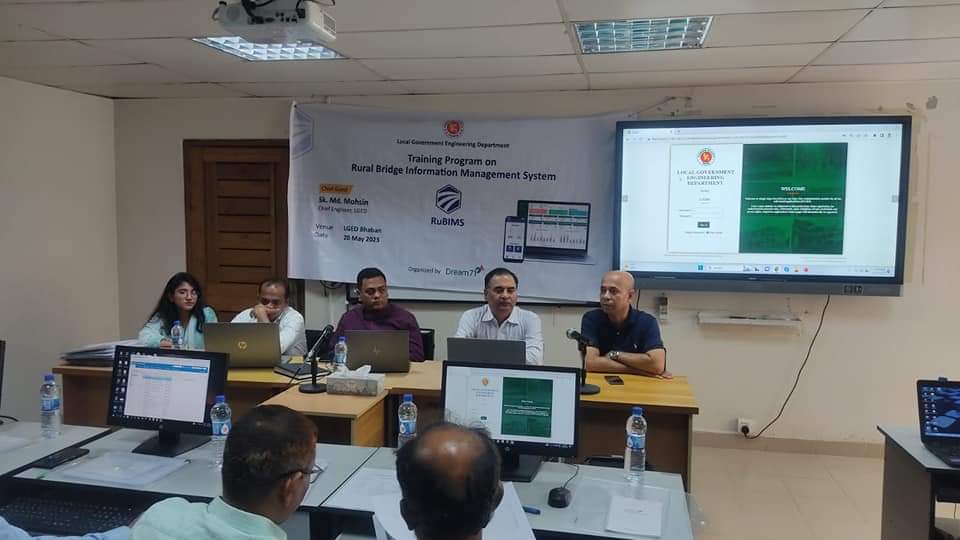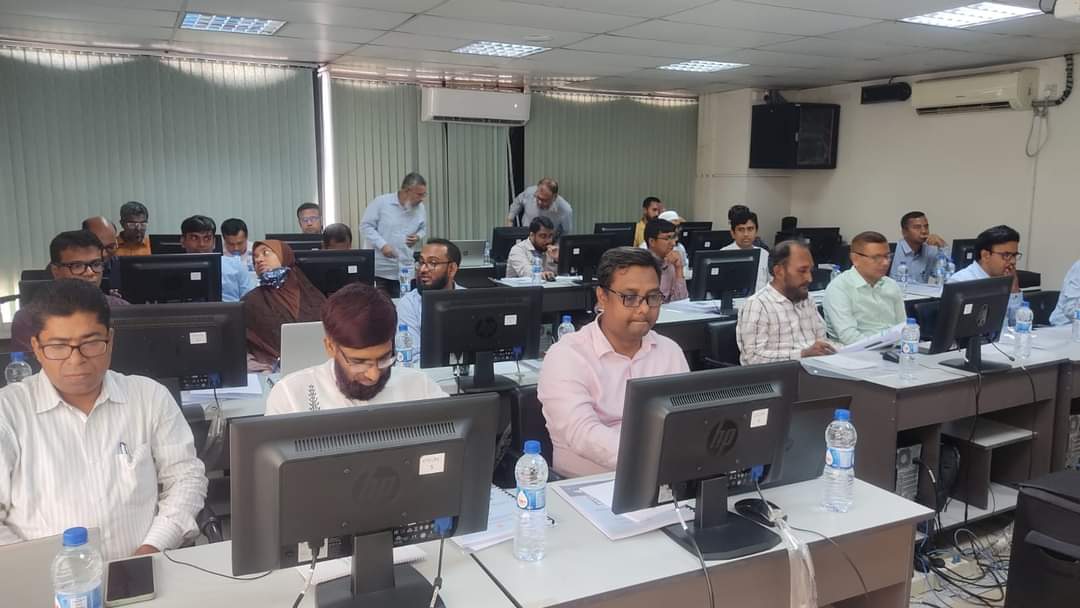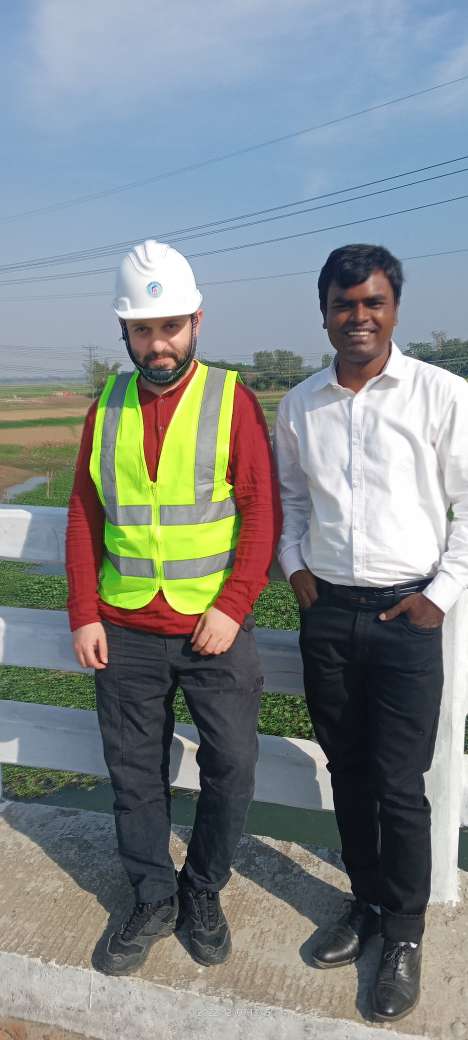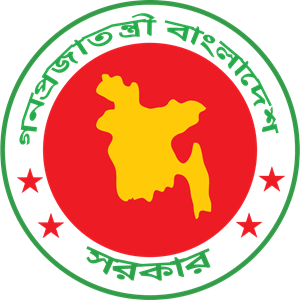
Local Government Engineering Department
Rural Bridge Information Management System
To achieve the vision of Digital Bangladesh. LGED deploying RuBIMS to inspect bridge condition and inventory information. The system will auto-generate bridge condition which is in good condition, poor condition, or need maintenance to the planning officers, according to the inspection data.
Problem Statement
LGED struggled with accurately assessing bridge and culvert health due to manual paperwork and lack of centralized data. This led to mismatches, time-consuming inspections, and inefficient decision-making. They implemented a digital solution to streamline the process, improve accuracy, and optimize maintenance efforts.
My Role
As a UX designer on the project, my role was crucial in ensuring the successful implementation of the digital solution for bridge inspection and planning. Here are some key responsibilities and activities I would undertake:
- User Research: Conduct interviews, surveys, and workshops with inspectors, planning officers, and other stakeholders to understand their needs, pain points, and expectations. Gather insights on user behavior, motivations, and requirements related to the bridge inspection process.
- Task Analysis: Perform a detailed analysis of the existing bridge inspection and planning process to identify pain points, inefficiencies, and areas for improvement. Break down complex tasks into smaller components to better understand user interactions and information flows.
- Information Architecture: Develop an intuitive and well-organized information architecture for the digital solution. Structure the data and features in a logical and accessible manner, making it easy for users to navigate, input data, and retrieve information.
- Wireframing and Prototyping: Create wireframes and interactive prototypes to visualize and communicate the proposed design solutions. Iterate on the designs based on user feedback and usability testing, ensuring that the interface meets user needs and expectations.
- UI Design: Work on the visual aspects of the interface, creating a visually appealing and user-friendly design that aligns with LGED’s branding guidelines. Select appropriate colors, typography, and visual elements to enhance usability and create a positive user experience.
- Collaboration with Development Team: Collaborate closely with the development team to ensure the successful implementation of the designed solution. Provide clear design specifications, guidelines, and support during the development process to ensure the design vision is accurately translated into the final product.
- Usability Testing: Conduct usability tests with representative users to evaluate the effectiveness and usability of the digital solution. Gather feedback, observe user interactions, and identify areas for improvement. Use test results to iterate on the design and enhance the user experience.
- Training and Support: Provide training sessions and ongoing support to inspectors and planning officers during the transition to the new digital solution. Help them understand the benefits, features, and functionalities of the system, ensuring a smooth adoption process.
- Continuous Improvement: Continuously gather user feedback, monitor analytics data, and conduct user research to identify opportunities for improvement. Collaborate with stakeholders to prioritize and implement enhancements that further optimize the user experience and meet user needs.
Qualitative User Research
Persona
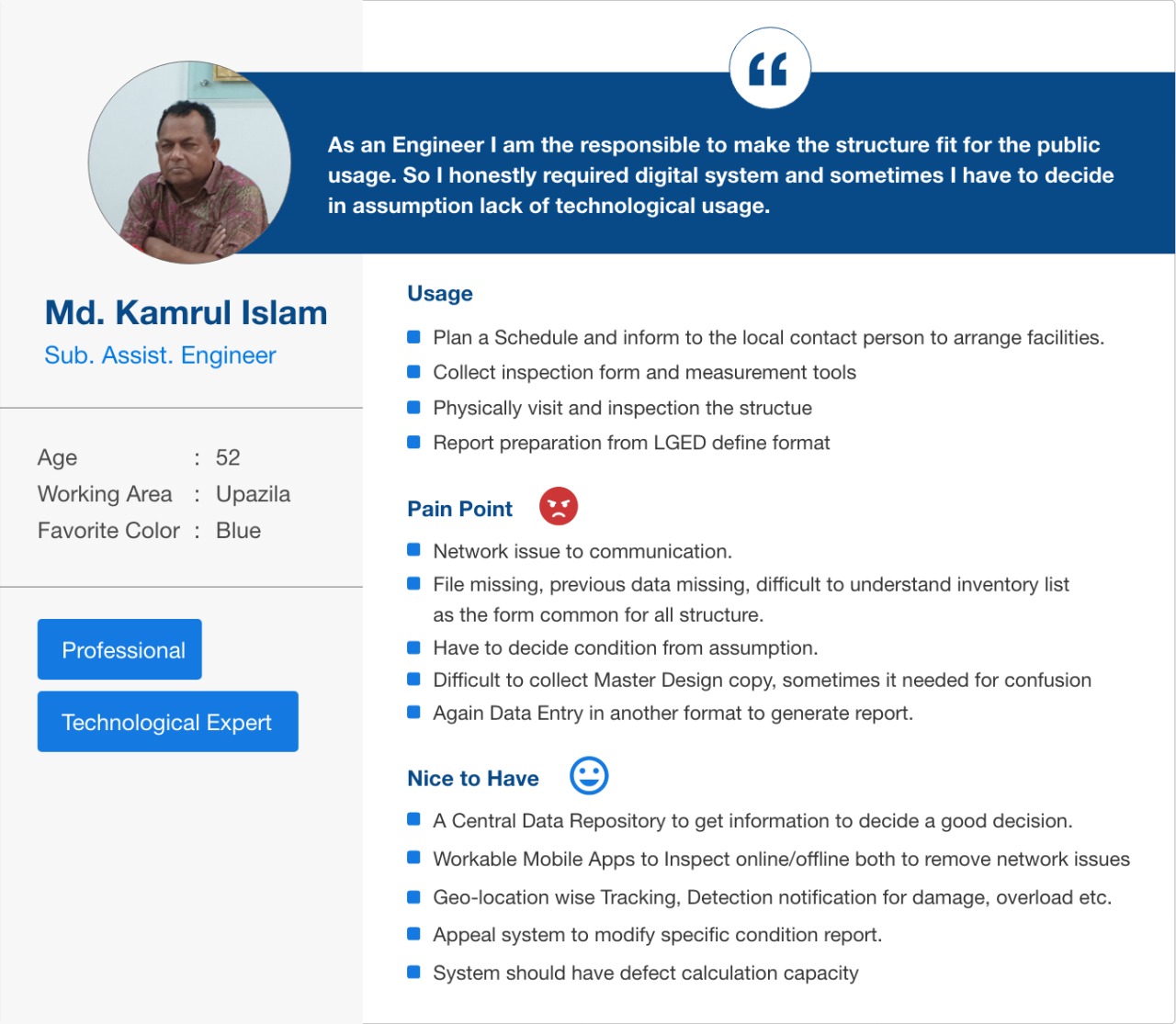
User’s Technological Knowledge

User’s Regular Work Process

User’s Common Pain Points
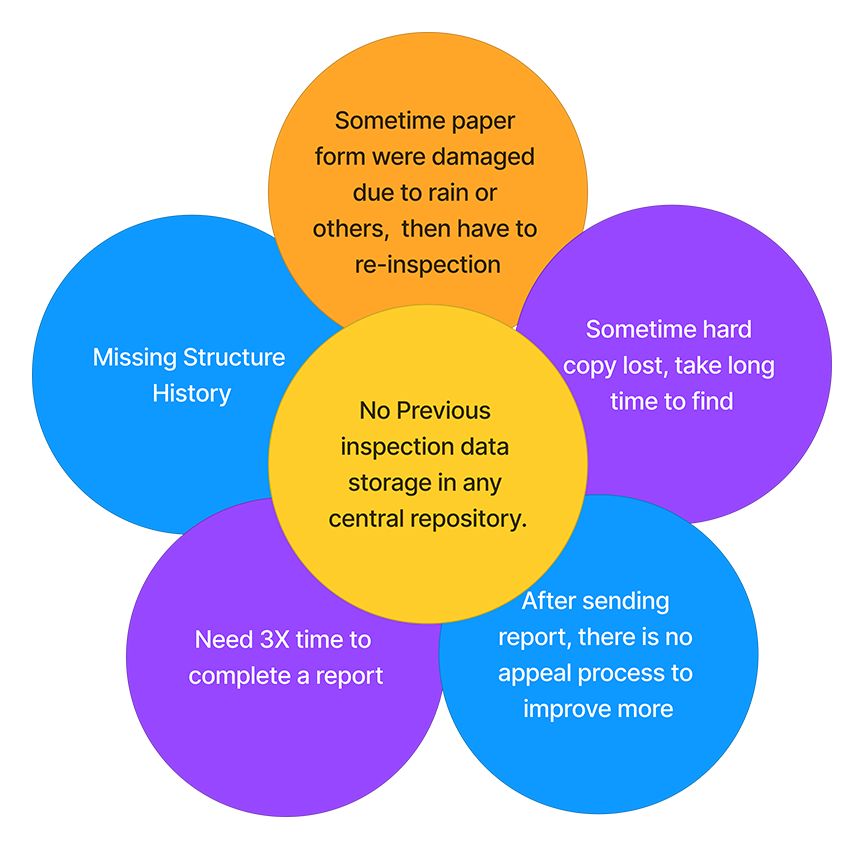
User’s Goals

User Flow
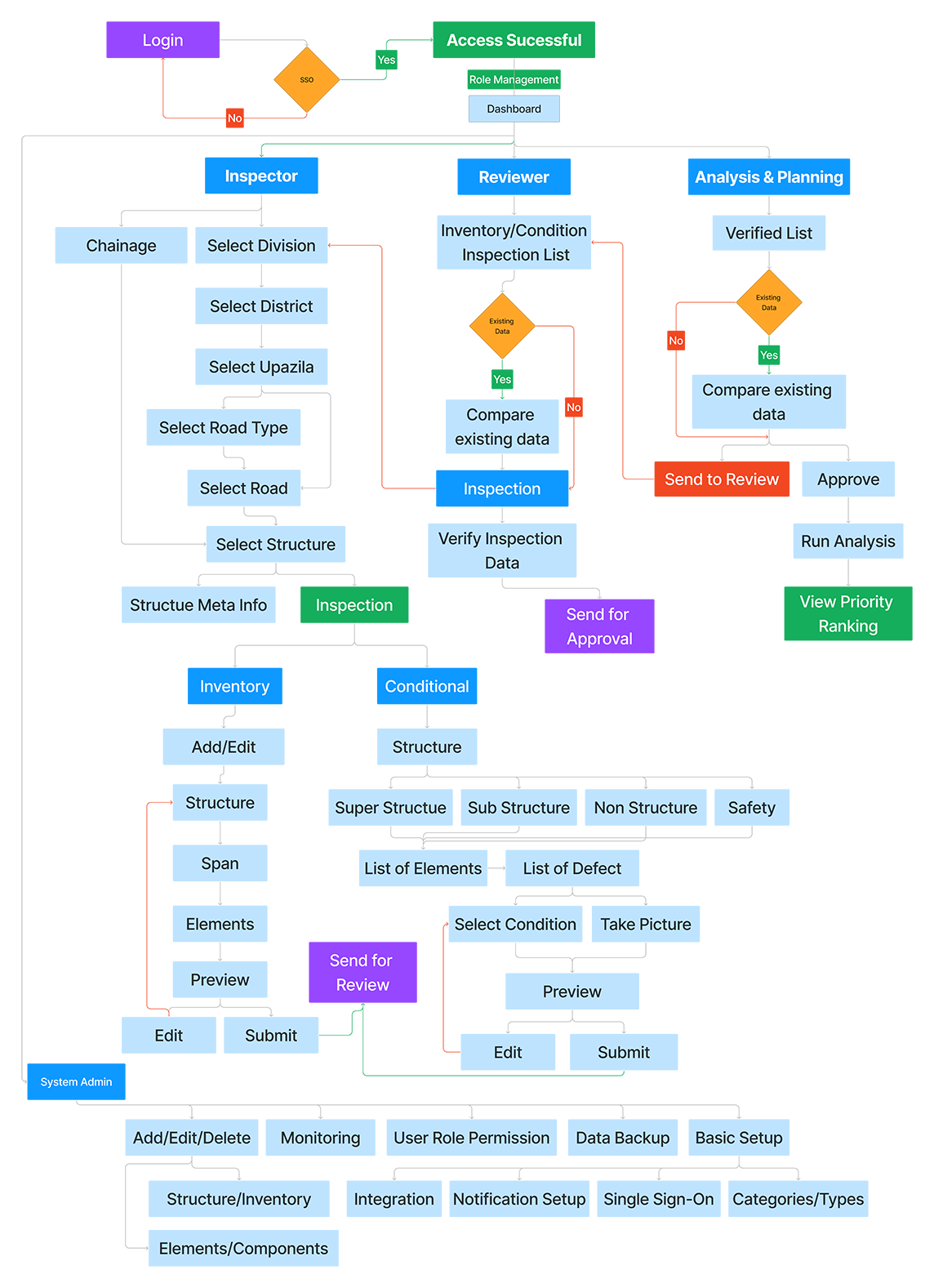
User Type
